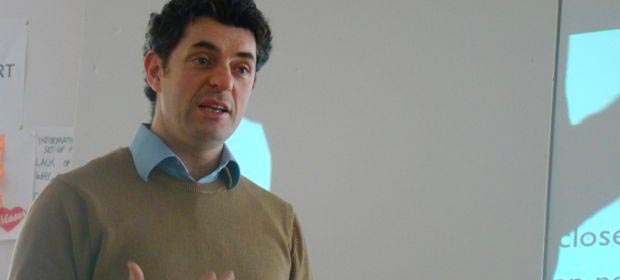Sustainable practices in waste, water, chemical use, procurement and transportation, to name a few, all have potential to boost the bottom line while also improving environmental and human health outcomes, writes John Harrington.
Sustainability is creeping up the corporate agenda. The fact that over 600 people attended the Green Awards in Dublin this year compared to just 400 in 2010 perhaps says something about its momentum among Irish organisations. The health sector, although later to the table, is now beginning to explore its potential. Three healthcare facilities for example, were short listed for the first ever Green Healthcare Award at the same ceremony.

But what exactly is sustainability and what’s it got to do with providing health services?
The Brundtland definition of sustainability is the most widely used and describes how society must operate in a way that meets the needs of the present without compromising the ability of future generations to meet their needs. What initially sounds like a moral imperative is also an economic one. Reducing healthcare generated emissions and pollution, for example, protects health now and in the future1 but the related savings on oil, gas and electricity also improves the health of the bottom line.
Energy is just one area where value can be generated from sustainability. Sustainable practices in waste, water, chemical use, procurement and transportation, to name a few, all have potential to boost the bottom line while also improving environmental and human health outcomes.
Some upfront capital may be required to generate some of these savings, e.g. to save on energy you many need to retrofit your heating and cooling systems, install new lighting, insulation, etc. but significant savings (ten per cent plus) can also be made by encouraging and engaging staff to be more energy conscious, the so-called soft initiatives2.
Innovations in financing also mean that pay-as-you-use is increasingly an option. Stewarts, for example worked with energy services company Dalkia, to retrofit 30 plus buildings on their campus. Dalkia supplied the up front capital which Stewarts will repay over 15 years from savings on its utility bills (over €160,000 per annum). This initiative recently won the Public-Private Healthcare Collaboration Award at the Healthcare Innovation Awards.
A food waste flow analysis of a large hospital conducted by CTC (Cork Technology Centre) as part of the EPA’s Green Healthcare Programme led to actual savings of €20,000 over two months, a potential annual saving of €120,000 for that one facility.
The programme also established, through waste audits with 18 healthcare facilities, that at least 15 per cent of the material in the clinical waste stream was non clinical and should therefore have been processed at a fraction of the cost. This represents a potential saving of over €1.25 million3 if applied to the 10,000 tonnes of clinical waste generated nationally in 20084
All healthcare facilities must develop their sustainability skills internally and to do this they must be able to learn from each other to collaborate and swap stories of which initiatives worked and why
Significant data is also available for facilities in the US. Although a different health system, the initiatives themselves are noteworthy. A 400 bed acute care facility in New England achieved the following cost savings through a variety of sustainability initiatives:
- $350,000 in reduced purchasing costs by reprocessing single use devices
- $147,000 of costs avoided by contracting with a reusable sharps container programme provider
- $16,000 in avoided purchase costs by distilling and reusing xylene and alcohol in-house
- $150,000 in energy costs through conservation methods
- $2,400 annually in avoided purchases of disposable cups, lids and sleeves by distributing reusable cups to all staff combined with a monetary incentive to use them.
These stories describe some of the savings available in healthcare through a programme of sustainability initiatives. Each facility’s journey is unique but top performers share key characteristics, for example their initiatives typically engage more clinical staff, have a dedicated green team and sustainability officer, and they work from a formal sustainability plan with written buy-in from senior management5.
What’s required now is support for all healthcare facilities to develop their sustainability skills internally. To do this facilities must be able to learn from each other to collaborate and swap stories of which initiatives worked and why. Some will be top down guided by facilities management while others will emerge driven by sustainability champions from within specific services. All need to be given a chance to develop and channel their energies to reduce costs, conserve resources and improve health outcomes for this and future generations.
Poll
John Harrington is the director and founder of RealEyes Sustainability Ltd, an organisation dedicated to helping their clients benefit financially and otherwise from sustainability. john@realeyes.ie
- Protecting health from climate change. World Health Day 2008. Summary of Issues Paper. Geneva, World Health Organization, 2008, p.1.
- Interview with Padraig Ryan, Energy Co-ordinator, May 5, 2011, Children’s University Hospital, Temple Street
- 10,000 tons at say €1,000= €10M vs. 8500 tons at €1,000 + 1500 tonnes at €150 per tons =€ 8.725M, a saving of 1.275M
- EPA waste database 2008
- 2010 Sustainability Benchmark Report, Practice Green Health, USA

